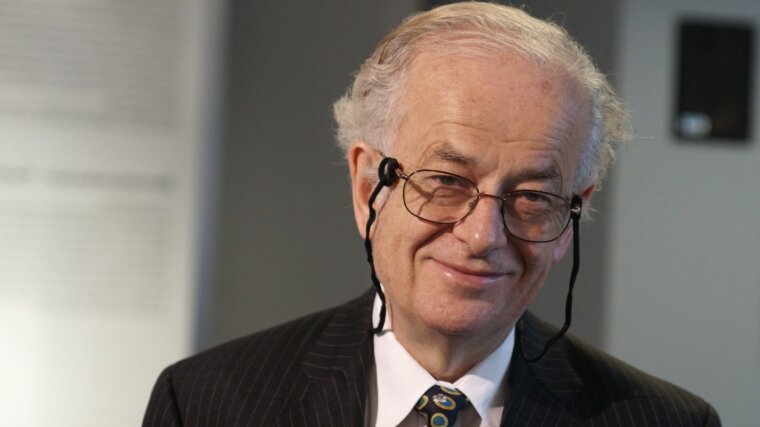
Federico Capasso, Robert L. Wallace Professor of Applied Physics and Vinton Hayes Senior Research Fellow in Electrical Engineering, Harvard School of Engineering and Applied Sciences, is visiting the Faculty of Physics and Astronomy as a Carl Zeiss Visiting Professor in March, April and May 2013. During his stay he will give a series of lectures.
Federico Capasso is the Robert L. Wallace Professor of Applied Physics at Harvard University, which he joined in 2003 after a 26 year career at Bell Labs where he rose from postdoc to Vice President for Physical Research. He holds a Doctor of Physics degree from the University of Rome, Italy, 1973. His research includes the quantum design of new artificially structured materials and devices, plasmonics, nanophotonics, nanomechanics and the investigation of quantum electrodynamical phenomena such as the Casmir effect. He is co-inventor of the quantum cascade laser, a fundamentally new light source, which has now been commercialized.
He has co-authored over 300 papers, edited four volumes, and holds over 65 US patents. He is a member of the National Academy of Sciences, the National Academy of Engineering, a Fellow of the American Academy of Arts and Sciences and a Fellow of OSA, IEEE, SPIE, APS and AAAS. His awards include the King Faisal International Prize for Science, the American Physical Society Arthur Schawlow Prize, the IEEE Edison Medal, the IEEE/LEOS Streifer Award, the Wetherill Medal of the Franklin Institute, the OSA Robert Wood prize, the Rank Prize in Optoelectronics, the Material Research Society Medal, the IEEE D. Sarnoff Award, the Welker Medal, the Duddell Medal and Prize of the Institute of Physics (UK), the Newcomb Cleveland Prize of the American Association for the Advancement of Science.
Website of Federico CapassoExternal link
Lecture 1: Casimir-Lifshitz Forces: Vacuum Fluctuations, Quantum Levitation and the Future of Nanomachines
Time: March 11, 2013, 11:00
Place: Lecture Hall 3, Helmholtzweg 3, 07743 Jena
Attractive forces exist between any uncharged surfaces in vacuum due to quantum mechanical fluctuations (zero point energy). Known as Casimir-Lifshitz forces, they can be tailored by suitable choice of the materials and their shape and even turned into repulsive by interleaving a suitable liquid. Measurements of these exotic forces will be presented. These results have implications for future scaled-down MicroElectroMechanicalSystems (MEMS) opening the door to new actuators, nanoscale position sensors and frictionless bearings based on quantum levitation. The talk will conclude with a brief discussion of future exciting possibilities such as the vacuum torque and the "holy grail" of quantum electrodynamics, light generation by "shaking the vacuum".
Lecture 2: Quantum Cascade Lasers: Compact Widely Tailorable Light Sources from 3 to 300 µm Wavelength
Time: March 12, 2013, 11:00
Place: Lecture Hall 3, Helmholtzweg 3, 07743 Jena
I trace the path from invention to exciting advances in the physics, applications and commercialization of these lasers which cover the mid- and far-ir spectrum and are broadly impacting chemistry, spectroscopy, sensing and sub-wavelength photonics.
Lecture 3: Casimir-Lifshitz Forces: Vacuum Fluctuations, Quantum Levitation and the Future of Nanomachines
Time: May 13, 2013, 15:15
Place: Lecture Hall 1 Abbeanum, Fröbelstieg 1, 07743 Jena
Attractive forces exist between any uncharged surfaces in vacuum due to quantum mechanical fluctuations (zero point energy). Known as Casimir-Lifshitz forces, they can be tailored by suitable choice of the materials and their shape and even turned into repulsive by interleaving a suitable liquid. Measurements of these exotic forces will be presented. These results have implications for future scaled-down MicroElectroMechanicalSystems (MEMS) opening the door to new actuators, nanoscale position sensors and frictionless bearings based on quantum levitation. The talk will conclude with a brief discussion of future exciting possibilities such as the vacuum torque and the "holy grail" of quantum electrodynamics, light generation by "shaking the vacuum".
Lecture 4: Classical Optics in a New Light: Flat Photonics Based on Metasurfaces
Time: May 15, 2013, 11:00
Place: Lecture Hall 2, Helmholtzweg 5, 07743 Jena